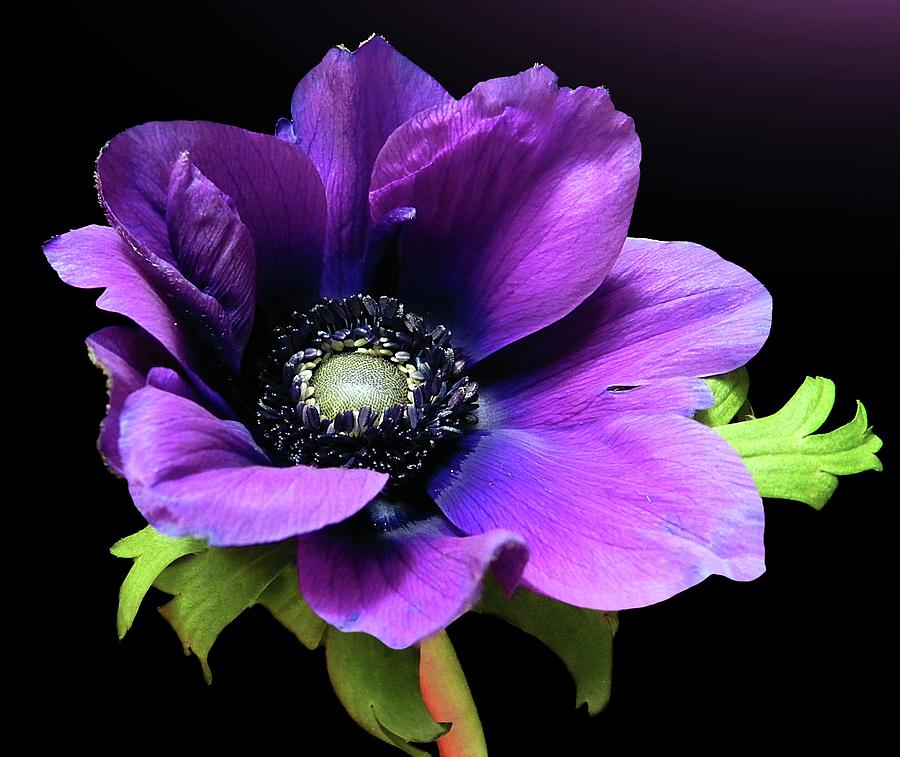Anemone
Anemones ~ Also known as windflowers, are a diverse group, with various species blooming in spring and fall. Some have fibrous roots and are found in the perennials section of nurseries and garden centers. Others grow from tubers that are sold and planted in the fall along with spring-flowering bulbs like tulips.About This Plant
Spring blooming anemones are low growing plants that are good choices for woodland and rock gardens. While most of them grow from creeping rhizomes, Grecian windflower (Anemone blanda) and poppy anemone (A. coronaria) grow from tubers. Plant these early bloomers in the fall; Grecian windflowers are hardy in zones 4-7, while poppy anemones thrive in zones 6-9 and are also popular for forcing.Tall growing fall anemones add color to borders and woodland gardens from late summer to late fall in shades of pink and white. These Asian natives bear large, cup-shaped blossoms on graceful stems that sway above clumps of dark green, maple-like leaves.
All anemones are poisonous if ingested.

Special Features
Wood anemone (Anemone nemorosa) This species will often naturalize in the shade of deciduous trees, where its deep green leaves provide a backdrop to its pure white, single, star-shaped flowers in early spring. Pink and blue cultivars are also available. Growing 6-8 inches tall, it prefers rich, moist but well-drained, acid soil; roots will rot if the soil is too soggy. Wood anemone goes dormant in early summer as the trees leaf out. Sometimes it's offered in the fall as a dormant rhizome. Hardy in zones 3-9.Snowdrop anemone (Anemone sylvestris) Another spring bloomer that naturalizes well, this species has fragrant, single, slightly nodding, 1-2 inch wide flowers on 12-18 inch plants. It prefers the same growing conditions as the wood anemone. Hardy in zones 4-9.
Grapeleaf Anemone (Anemone tomentosa 'Robustissima') Growing about 3 feet tall, this anemone will spread but is not invasive. The hardiest of the fall bloomers, it will grow in zones 3-9. The flowers are silvery pink and come into bloom in early fall, carrying on for several weeks.
Hybrid or Japanese anemone (Amemone x hybrida) This Asian native bears large, single or double, cup-shaped blossoms whose satiny petals surround a contrasting green and gold central button. Commonly available cultivars include the elegant, single-flowered, white variety 'Honorine Jobert', and semi-double, pink 'Queen Charlotte'. Its flowers are borne on 3-4 foot tall stems in mid fall. Hardy in zones 5-9.
Chinese anemone (Anemone hupehensis) Similar to the hybrid anemones, but more compact, these are 2-3 feet tall in bloom. Popular cultivars include deep rose-pink, semi-double 'Prince Henry' and 'September Charm' with single, rose-pink flowers in late summer to early fall. Hardy in zones 4-9.

Site Selection
Spring blooming anemones do best in part shade. Fall bloomers thrive in full sun to part shade. All appreciate soil that is moist, but well-drained- never soggy and on the acid side.Planting Instructions
Container grown plants can be set out throughout the growing season, but spring is preferred for fall bloomers. Divide the spring bloomers in midsummer or early fall. Space wood anemones 10 inches apart, snowdrop anemones 12-24 inches apart and fall bloomers 18 inches apart. Prepare the garden bed by using a garden fork or tiller to loosen the soil to a depth of 12 to 15 inches, then mix in a 2- to 4-inch layer of compost. Dig a hole twice the diameter of the pot the plant is in. Carefully remove the plant from its container and place it in the hole so the top of the root ball is level with the soil surface. Carefully fill in around the root ball and firm the soil gently. Water thoroughly.Care
Divide or move plants in the garden only in the spring. Fall anemones may be slow to establish, but once they are settled in they have a tendency to spread, as do the spring bloomers. Deadheading won't prolong bloom, but will make plants look neater.
No comments:
Post a Comment